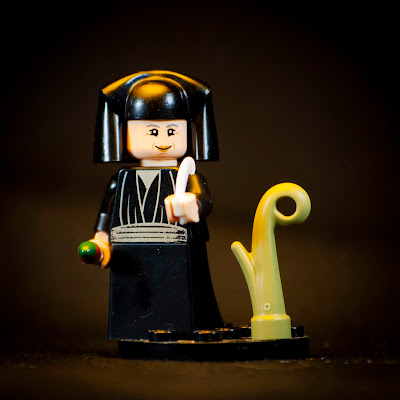St. Benedict Joseph Labre
St. Benedict Joseph Labre was an extreme ascetic, who voluntarily lived by begging alone. Though he died young, he was well known by his death because of his pilgrimages to major shrines throughout Europe and the ecstatic states he would achieve during contemplative prayer.
Benedict was the oldest of fifteen children born to a wealthy shopkeeper family. As a child, he studied under his uncle, who was a parish priest, hoping to one day become a parish priest himself. However, he changed his mind at the age of sixteen and instead desired to become a monk. At eighteen, an epidemic struck, and Benedict and his uncle worked together to care for the victims, but near the end of the outbreak, his uncle too died of the illness.
Benedict applied to join a Trappist abbey, but was turned away for being too uneducated and having poor health. He reapplied himself to his studies, and a few years later applied to another order, this time a Carthusian monastery. But the Carthusians, too, turned him aside. He was too young, and hadn't studied philosophy or chant as their admission required. Not easily dissuaded, he found another Carthusian monastery that was known for having lower admission requirements. And it worked - this monastery accepted Benedict as a trial postulant.
However, the trial did not last long. Both Benedict and his brothers in the monastery soon learned that he was not well-suited to monastic life. Solitude and immobility caused him to despair. He was dismissed, and returned home, in the eyes of many, a failure. But even still Benedict's faith was not shaken.
He had been turned away from the first Carthusian monastery for lack of education, so he dedicated himself to fulfilling the requirements of that monastery, hoping that he would be better-suited to it. He spent a year studying philosophy and chant and applied again. This time, the monastery accepted him, but the result was the same as the first. Though Benedict did his best to live the life of a monk, he grew depressed and was again dismissed.
It didn't end there - Benedict applied to two more monasteries, was accepted at one, and was sent out a third time after a trial period. Finally, he began to recognize his vocation. He was indeed called to a life dedicated to holiness, but not one set aside in a monastery. He would become a pilgrim, an outcast among outcasts, and a tramp. He was 25 when he began his pilgrimage on foot to Rome.
He left in a cloak tied with a rope, and with all his belonging in a bag slung over his back, including his Bible and a prayer book. He ate only what freely given to him or what he found on the roadside. If ever he begged or scavenged more than he needed for the day, he gave the excess to other vagrants rather than save it for the next day.
For the next seven years, Benedict lived like this, visiting not just Rome but Loretto and Assisi, Naples, Tuscany, Burgundy, and even sites in Switzerland and Germany. All of these he reached on foot, and all only by begging. He refused to accept more than a bit of change if someone offered cash. He refused any room that contained a bed. When he became ill, which was often, he didn't even beg, but only survived on what passersby left him of their own charity.
Despite living in cities full of people, or on roads with constant traffic, Benedict lived alone, speaking no more than a few words a month. He had found a monastery all to himself, in a way. And his soul thrived in it, just as it hadn't in the monasteries that sent him away.
Benedict eventually made a home, of sorts, in the ruins of the Colosseum in Rome. He frequented a church nearby, and stayed here when he was between pilgrimages. People nearby had come to know Benedict, especially from his prayers, which often led to ecstatic states including levitation and bilocation. He was regarded as a saint even before his death by those who knew him.
One day after Mass at the nearby church, Benedict collapsed. He was taken home and offered Last Sacraments, but was too weak. He died without a sigh or convulsion.
Almost immediately after, the children around who knew him came out in the streets, wailing "the saint is dead, the saint is dead!" It is said that all of Rome soon joined them. A line of soldiers joined the procession bringing his body to the church, and a double police guard joined them.
Benedict's body arrived at the church on Spy Wednesday. The church was packed with mourners for the rest of the Holy Week services, and he was buried beside the altar on Easter Sunday.
So many pilgrims came to visit Benedict's body and seek his intercession that the church couldn't close its doors for two months. Within a year he was known all throughout Europe. So many exaggerated accounts of his death began to spread that Benedict's confessor wrote his Life only three months after his death to set the record straight.






